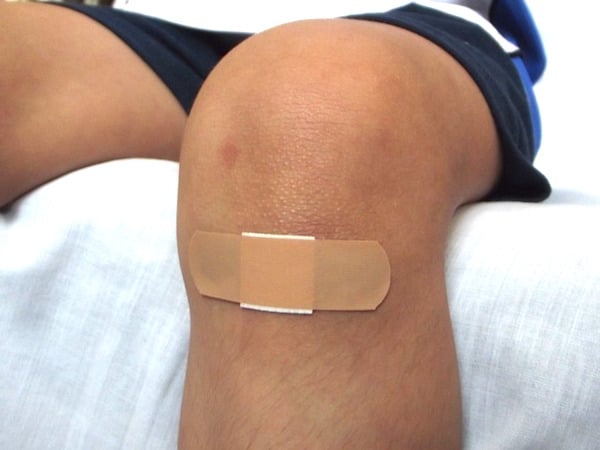By Meghan O'Neal
01/06/2020

After you get a new piercing, your piercer will give you a set of instructions on how to keep your piercing clean, probably alongside some warnings about complications like piercing infections.
Infections are nothing to mess with and can be quite scary, but they’re often misunderstood. In fact, many symptoms of healthy healing mirror symptoms of a piercing infection, so you might think that your piercing is infected when, in reality, it’s just going through the natural stages of healing.
At the same time, you don’t want to ignore a true infection. Left untreated, a piercing infection can go from a minor inconvenience to a massive medical mishap.
To help you understand what’s happening in your healing piercings, here’s what you need to know about piercing infections.
Although infections are one of the most talked-about complications when it comes to piercings, they’re actually quite rare. Often, natural healing, pustules, skin irritation, or other much more minor issues can be confused as a piercing infection.
Extreme cases of piercing infections are even rarer. If you choose a reputable piercer and adhere to aftercare practices, there’s a very small chance that you’ll develop a piercing infection.
This does not mean that you shouldn’t keep an eye out for infection. It simply means that if your piercing starts to feel strange, you shouldn’t immediately panic; there are a plethora of other things you could be experiencing, including natural symptoms of healing.
In order to tell the difference between natural healing and a piercing infection, it’s important to understand how your body heals a minor wound.
Immediately after a wound is inflicted, your body jumps into action. It will send blood to the wounded area in order to clear out any debris and kill harmful microbes. The exposed blood will clot in order to form a protective layer over the wound, further protecting it from harmful microbes.

Over the next few days, the body will continue to pump blood to the area, sending in nutrients and white blood cells to help keep the area clean and aid in healing. This is why it’s common to see swelling and feel throbbing in the first few days after a piercing. The skin might also feel slightly warm since the body raises the temperature around the wounded area to further kill bacteria.
It’s also common to see a secretion of clear liquid during the inflammatory stage of a wound. This is standard wound secretion, and it helps to clean out harmful bacteria.
Normal healing is often mistaken for an infection because many of the above symptoms are the same as a minor infection. However, there are some key differences to keep in mind.
It’s important to note that, when in doubt, you should always seek out medical help. It’s best to catch an infection early when treatment will be easy, even if it means going to the doctor when you don’t need to.
If you’re feeling some irritation or complication in your piercing, but you’re not showing real signs of an infection, then there are a few things that you could be experiencing. Luckily, most of them are minor and easy to fix.
Skin irritation from a metal allergy is a very common side effect that’s mistaken as a piercing infection. Symptoms of a metal allergy include red, inflamed, itchy skin or small bumps around the piercing or both. If this is the case, you should change your jewelry to something that’s nickel-free and high quality (like 14k gold).
Pustules are small, pimple-like bumps that can also be mistaken for an infection. They’re often caused by a buildup of dead skin cells under the skin. While it might be tempting to pop them, this could further irritate the piercing. Instead, soak it with a saline solution compress to help the pustule heal on its own.
When in doubt, always seek medical attention. While this article and others like it might help you to understand what might be happening to your piercing, it should not be construed as medical advice. Our bodies are complicated, and you should never self-diagnose your issue.

You can also visit your piercer first to have them take a look and let you know, in their professional opinion, whether or not you should seek medical attention. However, if you do develop an infection, they can sometimes spread quickly, so it’s best to get help rather than wait.
The good news about piercing infections is that they’re actually quite rare, and if you’re worried that you have one, it’s likely another, simpler complication. The bad news is that, if you have developed an infection, then the consequences can be quite serious.
Don’t let the fear of piercing infections preclude you from getting a piercing. But, if you’re concerned that your current piercing is infected, then you should seek medical attention. It’s always better to be safe than sorry when it comes to the health of your piercing and your body.
Still unsure about whether to take the plunge and get a new piercing? Here are some gorgeous jewelry options to inspire you.
Leave A Comment